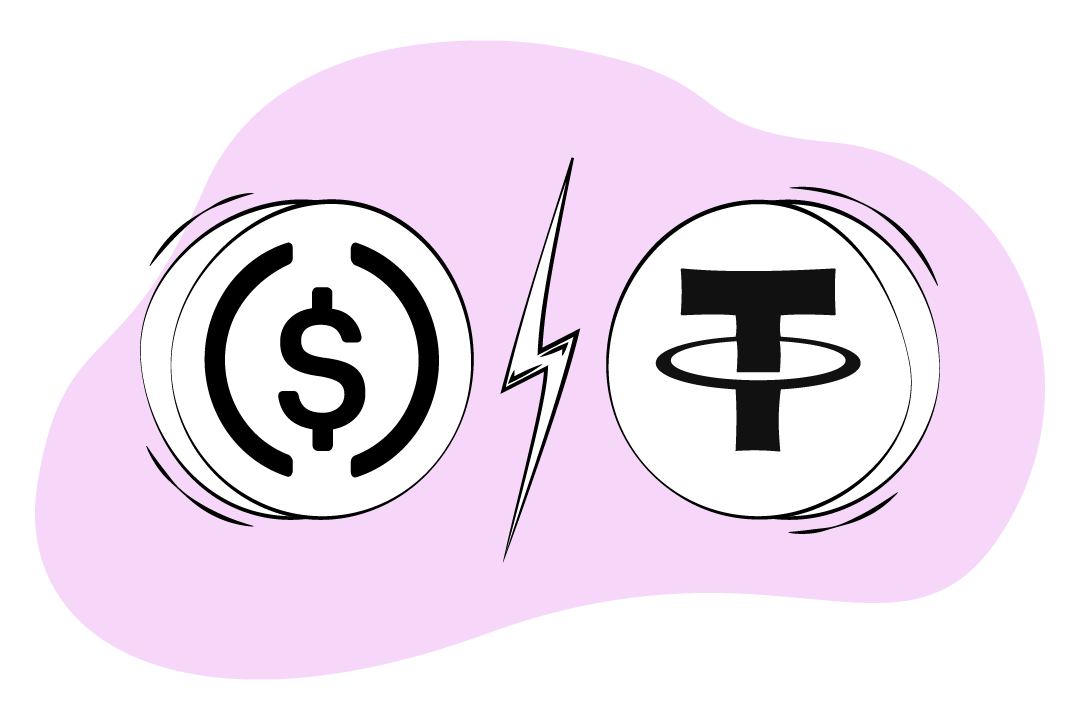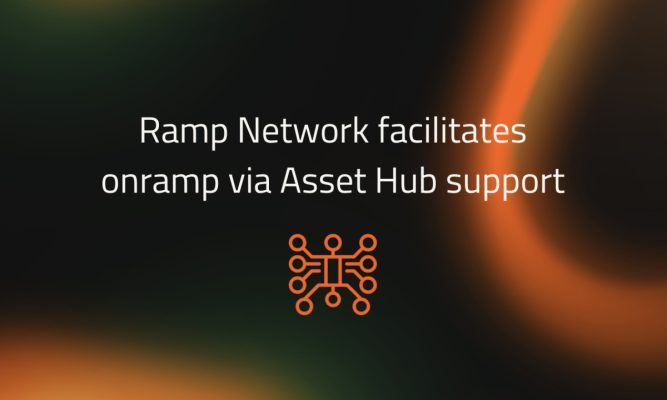Table of contents
”Crypto is the most volatile asset out there” is what we always hear. However, stablecoins like USDC and USDT gave a medium of exchange in which traders can find almost the same comfort as withholding fiat money.
Stablecoins managed to create a degree of stability for traders and attract and give courage to more people to join the cryptocurrency world.
Tether was one of the first stablecoins, and for that reason, it quickly got popular and climbed the market cap rank to the first five positions.
Yet, the ambiguity surrounding USDT called for a more “stable” stablecoin, that being USDC.
And just like in USDT’s case, there are quite a few companies behind USDC.
Circle + Coinbase = Center Consortium
USD Coin was launched in September 2018 by Center Consortium, a collaboration between Circle and Coinbase.
And now, USDC is one of the fastest-growing stablecoins pegged 1 to 1 to the US Dollar.
What is more remarkable is that Circle, the company that developed the stablecoin, is actually holding the amount of money required for backing the USDC in circulation in form of cash and short-dated U.S. government obligations.
As mentioned before, Center Consortium results from a collaboration between Circle and Coinbase. Besides that, it is an open-source, multi-issuer framework and governance consortium for stablecoins. In other words, the Center is the framework that enables the issuance and connection with other platforms for USDC and its governance.
Circle is a founding member and the creator of the core technology and IP behind CENTRE.
The company is backed by leading venture and strategic investors, including IDG Capital, Breyer Capital, General Catalyst Partners, Goldman Sachs, CICC Alpha, Baidu, WanXiang, CreditEase, and EverBright Bank. Through its development capabilities and platforms, Circle contributed significantly to the creation of the USDC.
Circle agreed to a $400 million investment round in 2022, which is going to conclude in the second quarter. This partnership advances the Circle’s sustained strategic expansion as demand for digital dollar currency, and related financial services grow internationally. As a result, the USDC is widely considered the fastest-growing dollar digital currency, with more than $50 billion in circulation.
The USDC has raised capital throughout this manner and investors such as BlackRock, Fidelity Management and Research, Marshall Wace, and Fin Capital. In addition, BlackRock and Circle have formed deeper strategic cooperation.
As for Coinbase, it is one of the top crypto exchanges and one of the founding members behind CENTRE.
In the creation of the new stablecoin that we know today as USDC, Coinbase contributed a great deal through development and insights, facilitating the launch and marketing to the crypto audience. Being pushed forward by a leading crypto exchange, USDC has grown popular quickly.
How does USD Coin work?

USDC works like a digital programable dollar that allows 24/7 fast transfers for micro and macro payments.
The stablecoin is pegged one-to-one to the US Dollar, and the market cap can be verified transparently through public records. Furthermore, the company that developed it, Circle, actually holds the USD amount to back the stablecoin in form of cash and short-dated U.S. government obligations.
In essence, USD Coin is an ERC-20 token that functions through the Ethereum Network. Nowadays, USDC transactions can also be settled through Algorand, Solana, and Stellar’s infrastructures.
Since the launch of USDC 2.0, the payment process has been simplified, with the gas fees being paid directly in USDC. Furthermore, USDC is integrated with numerous crypto exchanges, wallets, DeFis, and other crypto-related platforms.
However, things will alter slightly in 2022 when stablecoins begin to face regulatory oversight. The US Securities and Exchange Commission is preparing a path to bring in stablecoins as they raise concerns over crypto yield products.
The Blockchains enabling USDC
At base, USD Coin is an ERC-20 token created for payments, lending, investing, trading and trade finance.
Within Ethereum, the stablecoin integrates with decentralized finance applications, with millions of consumers and hundreds of millions of dollars in USDC value locked in the form of digital wallets, exchanges, DeFi protocols, savings, lending, and payment services.
However, nowadays, USDC is not bound to Ethereum solely as it managed to integrate and run on multiple blockchains.
Besides Ethereum, USDC has gotten access to the speed, scalability, and cost-efficiency provided by 3rd generation public chains Algorand, Solana, and Stellar.
On Algorand, USDC enables enterprise-scale applications through on-chain transactions that provide nearly instant settlement finality at 5 seconds, transaction throughput approaching 1000 tps, with current average transaction fees of approximately 1/20th of a cent.
On Solana, USDC supports up to 50k tps and offers 400ms settlement finality. Also, major DeFi projects are integrating with Solana.
On Stellar, USDC gets access to a transaction speed of thousands of tps, with an about 5 seconds settlement finality. The network is optimized for payment use cases, employing fees that are only a small fraction of a cent. The network is also optimized for hundreds of exchanges and wallets.
USDC 2.0
USDC is in continuous development and improvement. In August 2020, Centre Consortium announced the release of USDC version 2.0.
The second version of USD Coin comes with major updates in the protocol and smart contract.
The update is meant to improve USDC’s payments, commerce, and peer-to-peer transactions capabilities.
USDC 2.0 introduces gasless sends, enabling wallet and app developers to find a workaround for the gas fees and customers’ need to hold a balance in ETH. The gas fee payments are delegated to another address.
This creates a whole new market, allowing wallet developers to provide the gas payment service themselves or leave it to a third party. Whichever the way, the service provider can either pay the fees on behalf of the customer or deduct the fees directly in USDC.
This update simplifies the payment process. Customers will be able to send and receive USDC payments on a peer-to-peer basis using USDC alone, with fees expressed and paid in USDC instead of ETH.
Is USDC a good investment? Pros & Cons
USDC is a stablecoin, and if you want to invest solely to make a profit, it’s not what you’re looking for. As a stablecoin, the price has little to no volatility; therefore, you cannot time the market.
But as a value holder, USD Coin is the most transparent stablecoin in the crypto space. With that in mind, let’s look over its pros and cons.
USDC Pros
First, USDC is backed by well-known companies and is fully USD funded. These companies can be identified, verified, and held responsibly.
Centre Consortium and the companies behind it made every data verifiable through public and internal audits.
USDC is integrated with numerous applications and platforms, its primary listing being on Coinbase.
USDC Cons
USDC is a centralized stablecoin and is close to what a CDBC would be. The Coin’s issuer has complete control over it and can quickly terminate accounts and enforce decisions without consulting the users.
Even more, the smart contract behind USDC is customized, so each token represents non-fungible cash. This means each token has a unique identifier, although that doesn’t affect their interchangeability.
USDC vs. USDT

USDT is indeed one of the first stablecoins and certainly the most popular up to this day. However, the regulatory issues and the ambiguity surrounding Tether have created a feeling of insecurity toward stablecoin. Therefore, USD Coin comes as a popular alternative that people cannot help but compare to USDT.
- First off, USDC and USDT are both centralized stablecoins. USD Coin is issued and governed by Center Consortium and USDT by Tether Holdings Limited.
- In regards to regulation, USDC and the companies behind it proved to comply with everything coming their way. On the other hand, USDT and its supporting companies only partially comply with regulations and generally dodge uncomfortable questions.
- Tether’s proof of funds is somewhat ambiguous and has its stablecoin backed by liquidity partially, the rest being covered with cash equivalents and, from time to time, may include other assets and receivables from loans made by Tether to third parties. In counterpart, USD Coin is transparent and audited, fully backed by cash.
- While Tether has an ambiguous connection through the management team to Bitfinex and is issued through an offshore company, USDC is issued and backed by well-known companies based in the US and has top-notch management team leaders from various reputable corporations.
- Despite USDC’s growth, USDT still has x19 more trading volume and x2 times the market cap.
Key takeaways
- The ambiguity surrounding USDT called for a more “stable” stablecoin, that being USDC.
- USD Coin was launched in September 2018 by Center Consortium, a collaboration between Circle and Coinbase.
- The stablecoin is pegged one-to-one to the US Dollar, and the market cap can be verified transparently through public records.
- USD Coin is primarily an ERC-20 token registered on Ethereum. However, the stablecoin has integrated 3rd generation public chains Algorand, Solana, and Stellar.
- As a stablecoin, the price has little to no volatility; therefore, you cannot time the market. But as a value holder, USDC is the most transparent stablecoin in the crypto space.
- USDC and USDT are both centralzied stablecoins. And while USD Coin is remarkable for having good connections and a high degree of transparency, USDT still has x18 more trading volume and x2 times the market cap.



